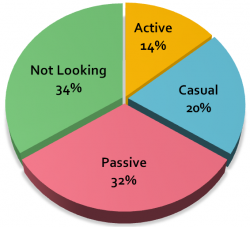 It is all too easy for sourcers, recruiters, HR professionals, and hiring managers/teams to develop a skewed, distorted, and decidedly one-way view of the world. Perhaps spending 99% of the time on only one side of the recruiting process is to blame.
It is all too easy for sourcers, recruiters, HR professionals, and hiring managers/teams to develop a skewed, distorted, and decidedly one-way view of the world. Perhaps spending 99% of the time on only one side of the recruiting process is to blame.
Regardless of the cause, it is absolutely critical to regularly take the time and think about, understand, and appreciate the recruiting life cycle from the candidate’s side – the job seeker, the passive candidate, the non-job seeker, and the elusive “A+ player.”
In this article I’m going to walk you through over 10 different scenarios in which I think recruiters and hiring teams can benefit greatly by taking the candidate’s perspective into careful consideration.
If you don’t take well to being challenged to think differently from time to time, or if you don’t like long blog posts, you may not want to read any further. This one clocks in at 3700+ words.
Consider yourself warned. :-)

 Quite simply, the deeper the data offered by and the more searchable the the source is, the higher the ROI for your sourcing efforts.
Quite simply, the deeper the data offered by and the more searchable the the source is, the higher the ROI for your sourcing efforts.





 Imagine that you were just assigned a position to recruit for and that you needed to present 2 fully screened, highly qualified and well matched candidates within 5 business days.
Imagine that you were just assigned a position to recruit for and that you needed to present 2 fully screened, highly qualified and well matched candidates within 5 business days. Whatever your thoughts may be regarding the sourcing role, companies and their HR/staffing organizations have at least 2 ways of handling the talent discovery/identification function: 1) Simply allow full life cycle recruiters to handle the sourcing role as an integrated function, or 2) Separate out the sourcing function and assign the work to people who are solely responsible for talent identification.
Whatever your thoughts may be regarding the sourcing role, companies and their HR/staffing organizations have at least 2 ways of handling the talent discovery/identification function: 1) Simply allow full life cycle recruiters to handle the sourcing role as an integrated function, or 2) Separate out the sourcing function and assign the work to people who are solely responsible for talent identification. The other day I came across an
The other day I came across an 
 Spoke
Spoke





